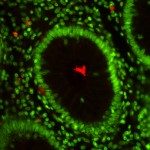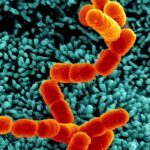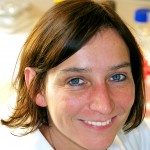Link to Pubmed [PMID] – 31492657
Cell Host Microbe 2019 Sep;26(3):435-444.e4
Intestinal epithelial cells are constantly exposed to pathogens and mechanical forces. However, the impact of mechanical forces on infections leading to diarrheal diseases remains largely unknown. Here, we addressed whether flow and peristalsis impact the infectivity of the human pathogen Shigella within a 3D colonic epithelium using Intestine-Chip technology. Strikingly, infection is significantly increased and minimal bacterial loads are sufficient to invade enterocytes from the apical side and trigger loss of barrier integrity, thereby shifting the paradigm about early stage Shigella invasion. Shigella quickly colonizes epithelial crypt-like invaginations and demonstrates the essential role of the microenvironment. Furthermore, by modulating the mechanical forces of the microenvironment, we find that peristalsis impacts Shigella invasion. Collectively, our results reveal that Shigella leverages the intestinal microenvironment by taking advantage of the microarchitecture and mechanical forces to efficiently invade the intestine. This approach will enable molecular and mechanistic interrogation of human-restricted enteric pathogens.








